Coredo Muromachi: Combining Traditions With A Modern Twist
Visit This Unique Shopping Complex In Nihonbashi For Your Next Culture Fix
This commercial complex in Nihonbashi, where tradition meets modernity, is the perfect stop for the culturally savvy shoppers.
Located between the two tourist meccas of Asakusa and Ginza and just a stone’s throw from Tokyo Station is the Nihonbashi area where you’ll find the elegant Coredo Muromachi complex, a modern facility which offers top-class shopping and cultural experiences under the same roof.
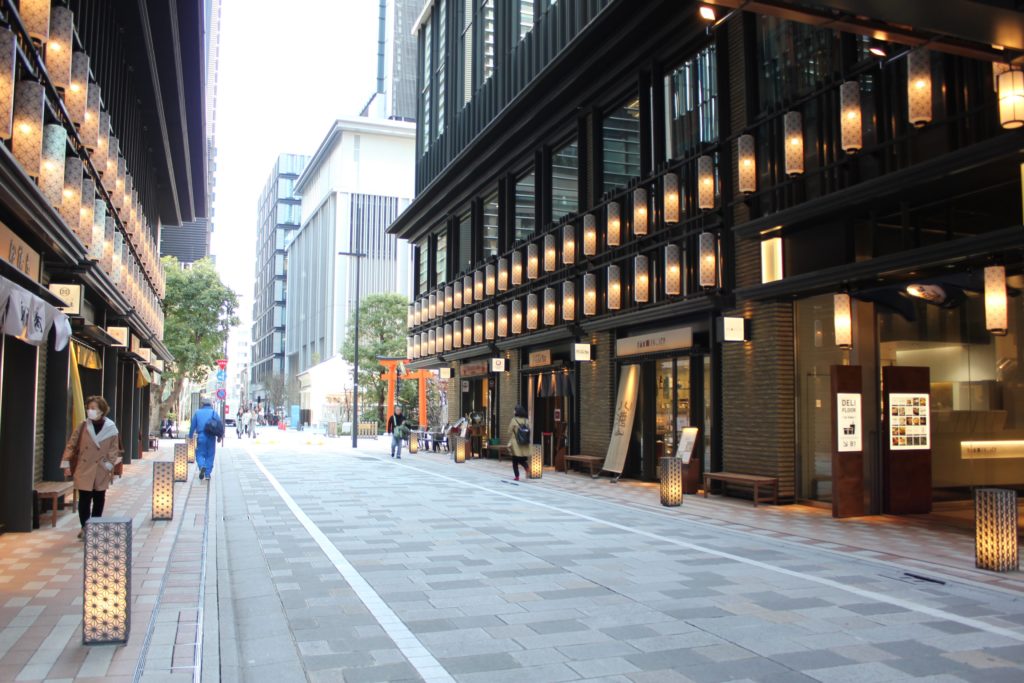
Back in Edo era Japan, Nihonbashi was an important center of commerce, trade and entertainment. The big bridge, from which Nihonbashi gets its name, is one of the major bridges of Tokyo. Right next to Coredo Muromachi is the picturesque Fukutoku Jinja Shrine, which serves as a well-loved symbol for the local community and provides a perfect spot for photo ops after shopping. Coredo Muromachi today stands as a symbol of both modernity and preservation of the area’s traditional cultural values, a commercial complex that caters to customers’ needs, be it dining and wining or hunting for traditional crafts.
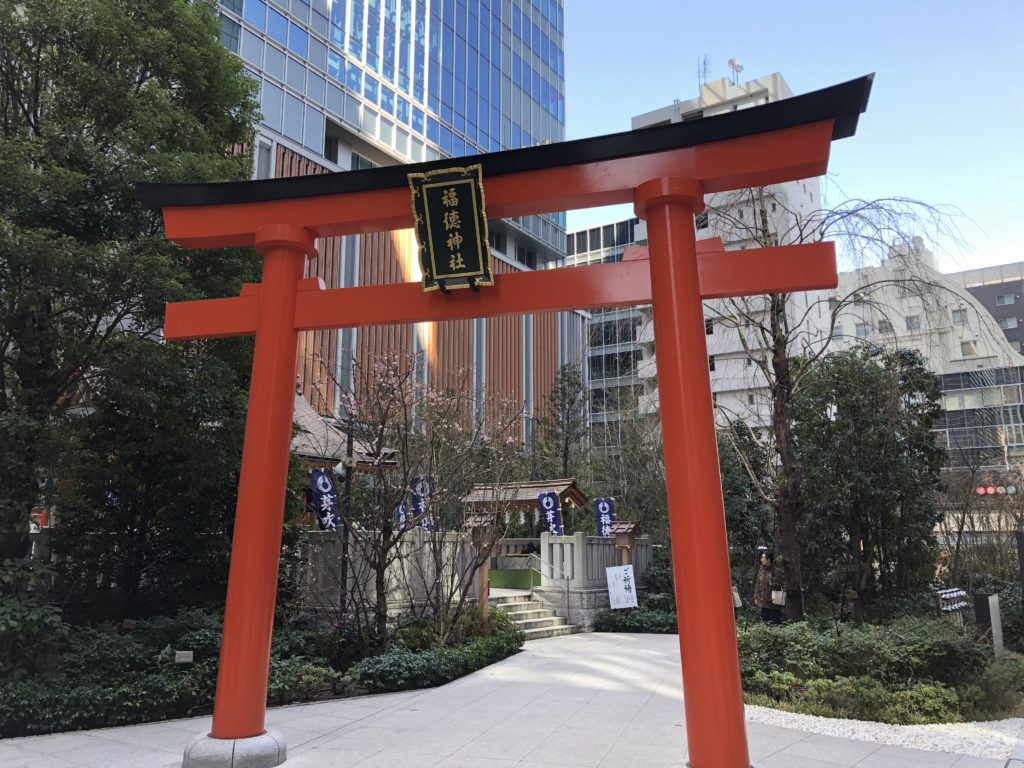
What’s in store at Coredo Muromachi?
Divided into three shopping buildings (Coredo 1 to 3), each with several stories, Coredo Muromachi offers a wide array of restaurants and lifestyle stores, many of which focus on traditional Japanese crafts and cuisine from across the Japanese archipelago. During a recent visit to the complex, in just a couple of hours, I “travelled” to Kyoto, Fukui, Ishikawa and Niigata, all without leaving Tokyo. Coredo Muromachi has a wealth of shops to interest both international visitors and residents alike, along with many restaurants and even a movie theater. The Nihonbashi Information Center is handily located in B1 of Coredo 1, with multilingual assistance on tourism, events and history of the area.
During a recent visit to the complex, in just a couple of hours, I ‘travelled’ to Kyoto, Fukui, Ishikawa and Niigata, all without leaving Tokyo.
While it is certainly difficult to choose your favorites and when visiting it’s worth saving yourself a good few hours, here are seven of the complex’s best stores that are proudly offering traditional Japanese tastes and culture for today’s curious and discerning customers.
1. Wagashi: Tsuruya Yoshinobu
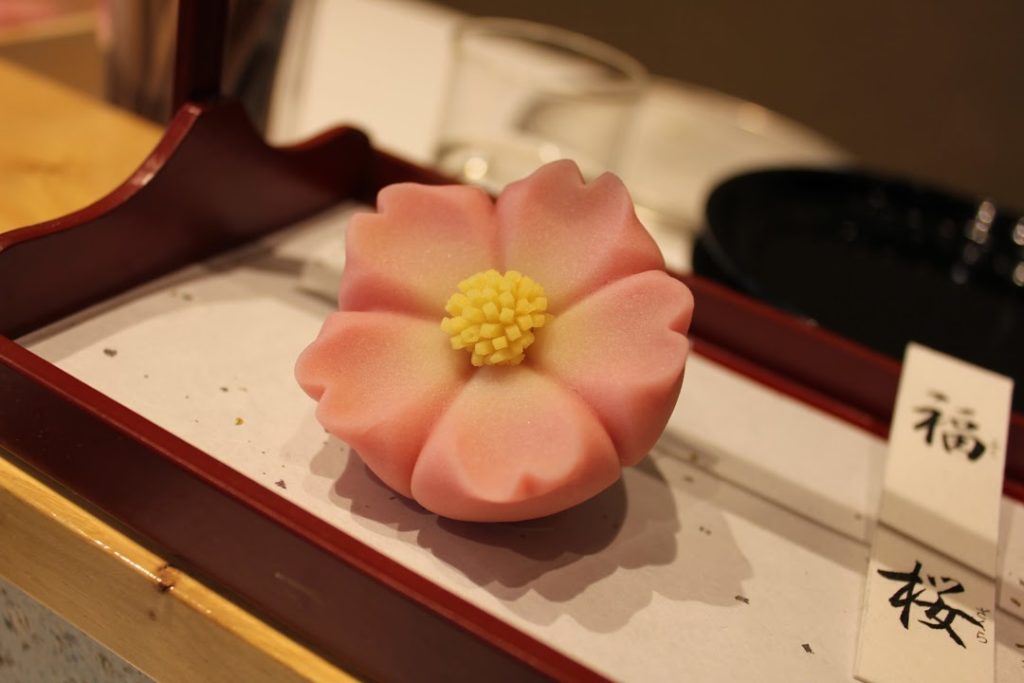
Tsuruya Yoshinobu was founded in 1803 in Kyoto and the Coredo Muromachi store brings its beautiful creations to Tokyo customers. During the press tour at the facility, I watched as wagashi master Takayoshi Watari demonstrated how to make three different sweets for spring, incorporating such motifs as cherry blossoms and butterflies.
“You can express all the seasons through Japanese sweets,” he explained as his fingers deftly worked their magic. Coredo has one of only two stores in the company’s chain where customers can watch the sweets being made right in front of them. The other one is in Kyoto. For those who find wagashi not quite to their taste, Tsuruya Yoshinobu also offers a range of the jelly-like sweets known as kanten in non-traditional Japanese flavors that include mint, chamomile, lavender and jasmine. These are also popular with younger Japanese customers.
2. Japanese Sake: Hakkaisan
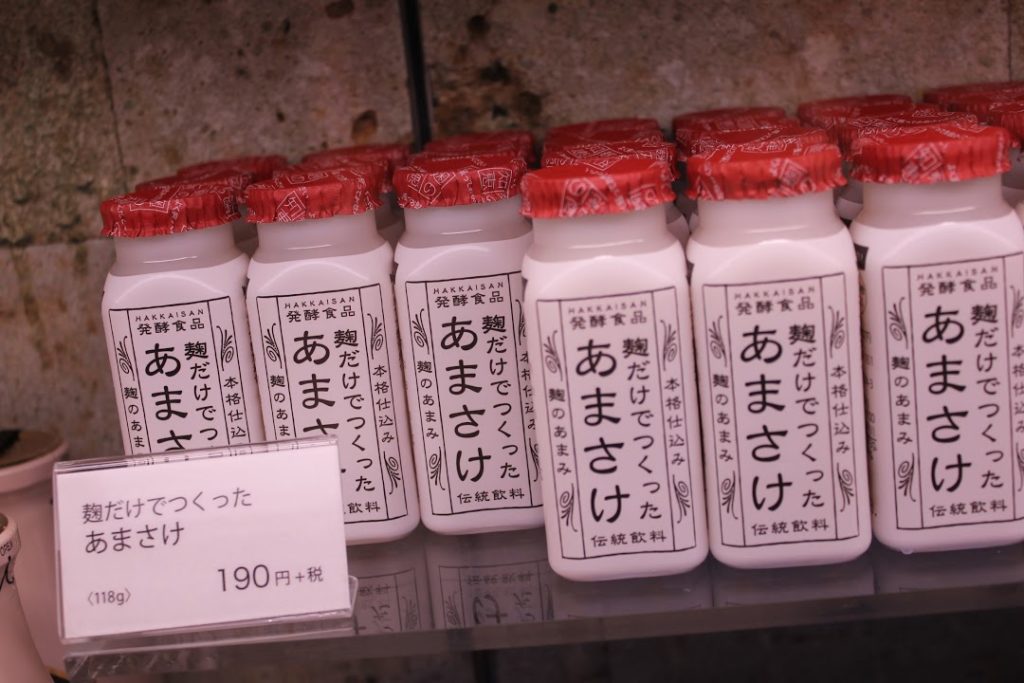
Hakkaisan’s brewery is located in Minami-Uonuma, Niigata Prefecture, an area known for its rice, the main ingredient in sake. The grade and taste of the sake depends on how much the rice is polished, with the most expensive sake only using the center of the grains. Hakkaisan also produces a variety of other Japanese drinks to enjoy with meals, including umeshu (plum wine), beer and amazake—a sweet, mild sake. Amazake, associated with Girl Day celebrations on March 3, is traditionally non-alcoholic and perfect for those who don’t or can’t drink alcohol.
3. Tsukemono: Nishiri
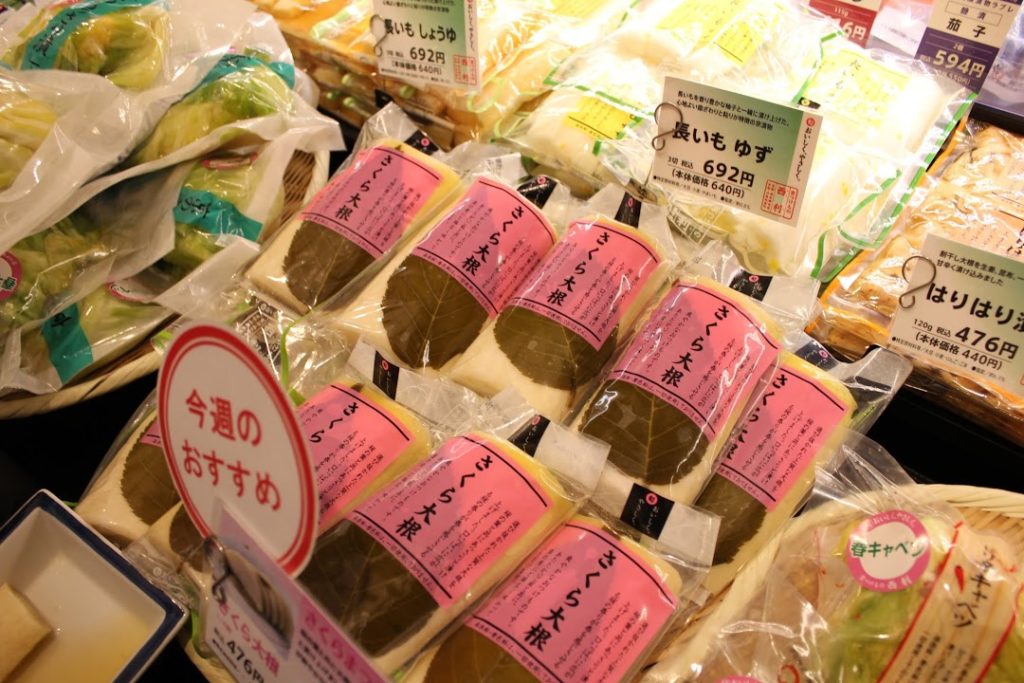
Nishiri is a shop specializing in Japanese pickles or tsukemono. I was met with a wide arrange of colors and tastes and eagerly availed myself of the samples on offer. I found the unusual apple pickles particularly tasty, and they would pair well with yogurt or ice cream for a unique dessert. Nishiri is based in Kyoto and uses vegetables originating from that area. Tsukemono, which are pickled in salt or fermented a bed of rice bran, are low in calories but big on flavor, going equally well with salads, meat and fish dishes.
4. Gold leaf crafts: Hakuza Nipponbashi
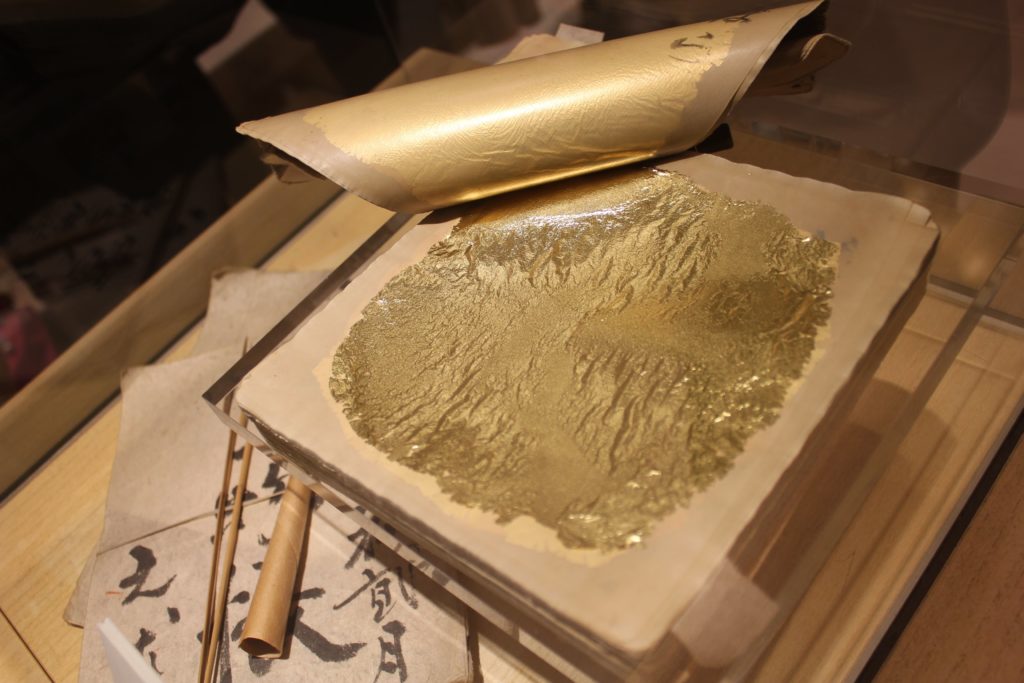
It’s hard not to gasp in awe as you step through the doors of the gorgeous Hakuza Nipponbashi store. They specialize in gold leaf, the same kind used to restore historic temples around Japan. Hakuza is based in Kanazawa, Ishikawa prefecture, which became famous for its gold leaf arts and crafts. Today anybody can enjoy a touch of luxury at very reasonable prices, as Hakuza offers a wide variety of gift items incorporating the gold leaf, including tableware, jewelry and sweets.
“We hope customers will be able to experience and enjoy a little bit of luxury in their daily lives with our products,” explained staff member Akiko Kitajima. One popular product is disposable chopsticks that release a shower of gold leaf when snapped open—a touch of indulgence for that extra-special occasion!
5. Japanese knives: Kiya
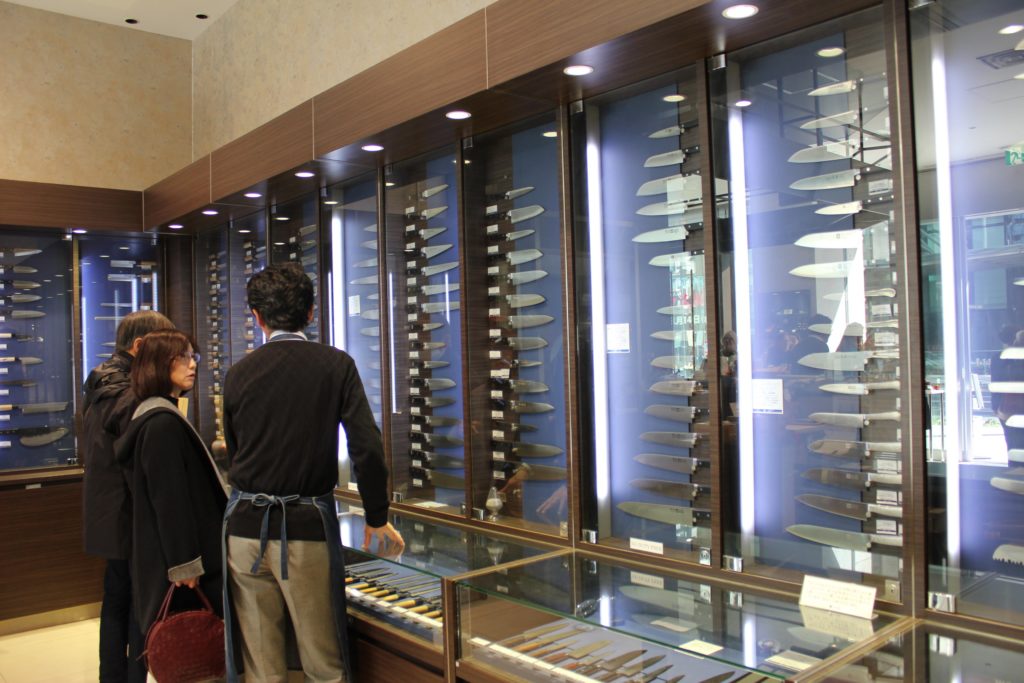
Kiya is a manufacturer of Japanese knives with a long and proud history. After the end of the samurai culture, sword makers turned to knife making, helping to literally give Japan a “cutting edge” in this industry. Kiya has long had a presence in the Nihonbashi area, and features in a well-known picture scroll known as the “Kidaishouran,” dating back from 1805. Today, customers come from all over the world to select from their top-quality knives and cutlery.
On the day we visited, one of Kiya’s masters demonstrated his precision knife-sharpening skills. “A properly sharpened kitchen knife should slice through a piece of sponge cleanly and easily. Or if you don’t have any sponge, then it should slice through a piece of bell pepper without squashing the shape,” he explained. Another tip is to use a wooden chopping board, which is easier on your knives than a plastic one. Kiya will sharpen knives of any brand for you (fees vary).
6. Dried Bonito: Ninben
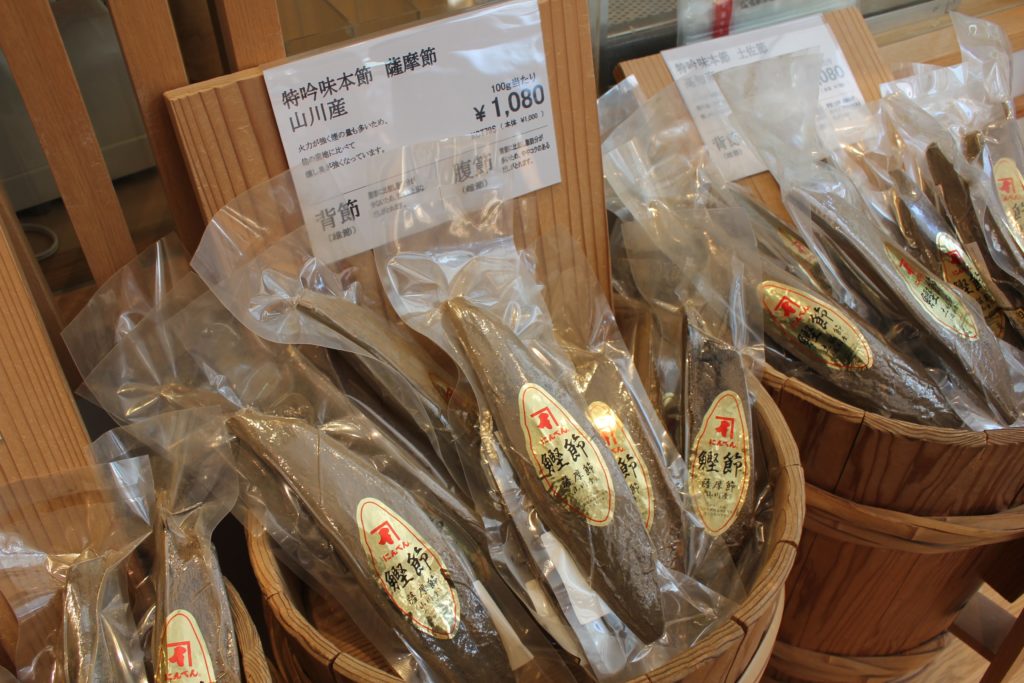
Another store with a long association in Nihonbashi is Ninben, which produces katsuobushi, or dried bonito, for use in Japanese dashi. This dashi is the basis for many Japanese dishes and Ninben has been in the area since the late 17th century. Staff member Mitsuru Oba showed me how the dried bonito fish is filleted and then shaved to make the katsuobushi, using a traditional hand-operated grater. Of course, commercial katsuobushi is now grated by machine, but it was interesting to see how it was done in the past. Ninben stocks a wide variety of packaged dashi for easy use at home, and being light, makes a good souvenir for overseas visitors.
7. Seaweed: Okui Kaieseido
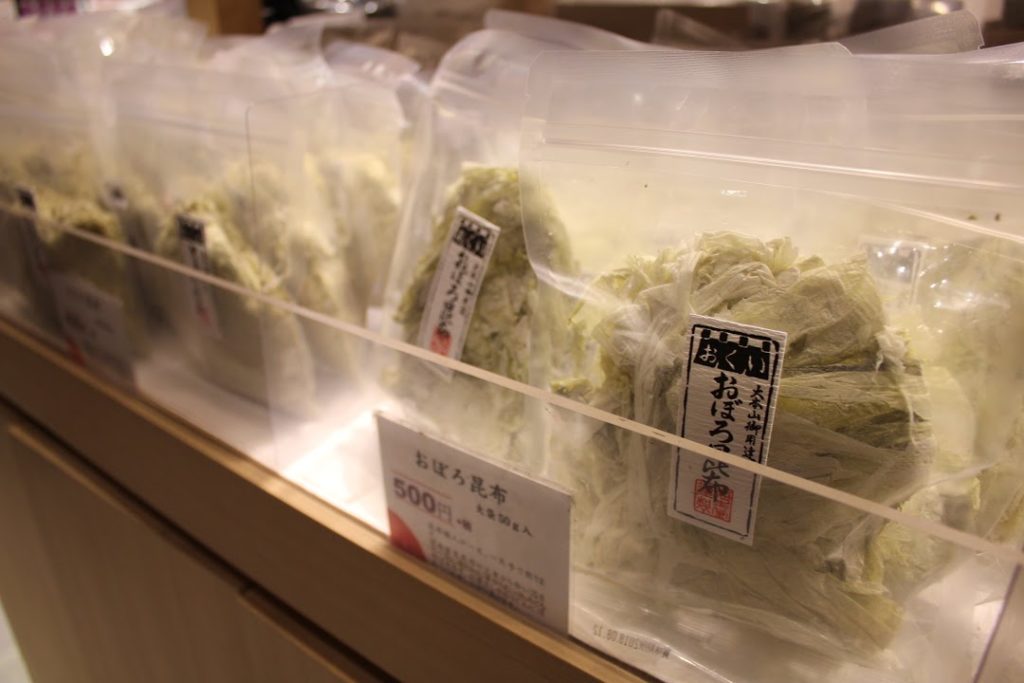
Last but certainly not least is a store which originated in Fukui prefecture—Okui Kaieseido, producer of konbu (dried kelp) and seaweed. Like katsuobushi, konbu is another key ingredient in Japanese cooking, and sea-plant products are now gaining attention overseas for their health benefits, too. In addition to being used to make dashi, depending on the type, versatile kombu can be wrapped around rice balls, mixed with hot rice or even enjoyed as kombu candy. This last kind is particularly popular as a souvenir with international visitors, and I rounded out my visit with a sample of the delicacy. As an added bonus, Okui Kaiseido also offers beautiful Echizen washi paper gift boxes from Fukui, for that special touch for souvenir shopping.
While visiting Coredo will be fun at any given time of the year, it is worth noting that the area is currently hosting its annual Sakura Matsuri until April 15, a fun series of seasonal events and offers worth taking a picture or two. And things will be cooking even more in Nihonbashi on March 20 with the opening of Suigian, a multi-faceted entertainment complex featuring the best in traditional Japanese culture, cuisine and performing arts.
Can’t speak for you, but the next time I have family, friends or colleagues visiting from overseas, a visit to Nihonbashi will definitely be on the agenda!
The Deets
Address: 2-2-1, Nihonbashimuromachi, Chuo-ku, Tokyo
Access: Coredo Muromachi can be reached directly from the Mitsukoshimae Subway Station or JR Shin-Nihombashi Station.
Open: Shops—10 a.m.–9 p.m.; Restaurants—11 a.m.–11 p.m. (Hours may vary depending on the establishment)












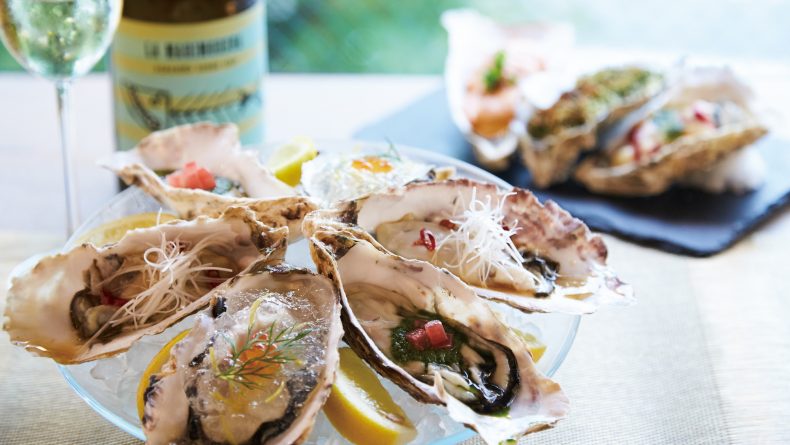
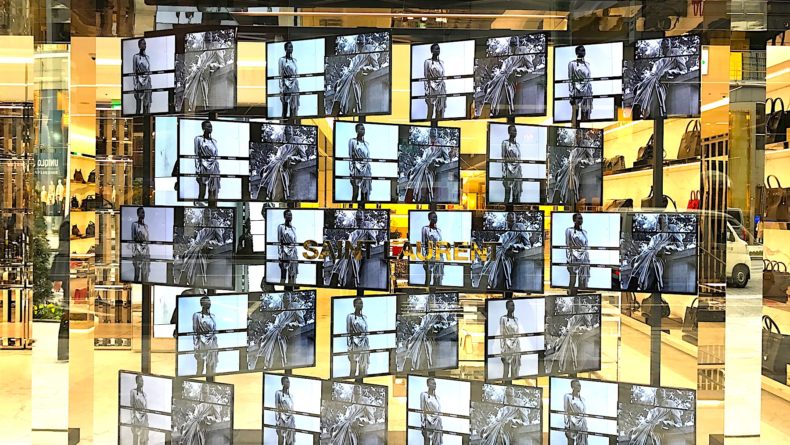

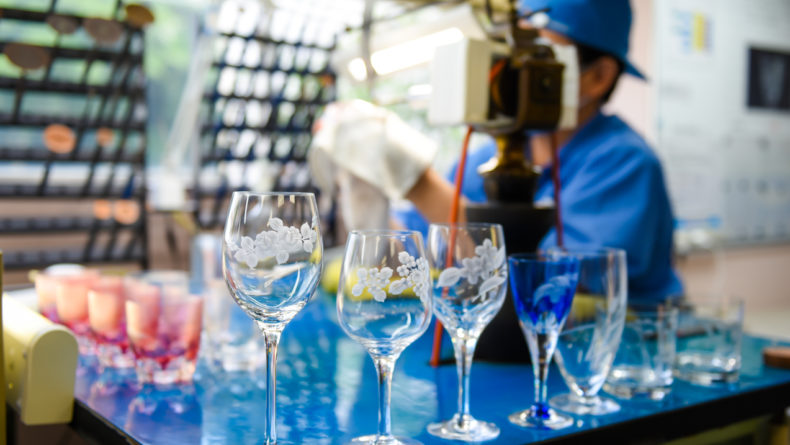
Leave a Reply